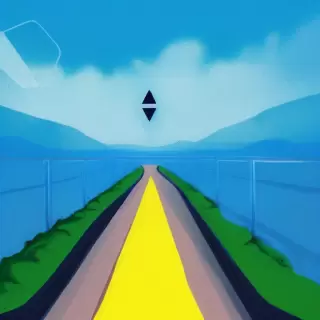10 Kickoff Questions From Off the Beaten Path
Kicking off a video project right is arguably the most vital step in shaping the direction a project will take.
Focus on the undercurrents that are driving the project, and not how it will get done.

Wes Kennison
![]()

By Wes Kennison
6 min read
Ah yes, the ol’ “PreProduction Questionnaire”
Many of my peers proclaim it be a watered-down exercise in streamlining what should be a precious, bespoken process (eg; the creative process that drives the video production effort). But every project is an opportunity to meet business needs using video content, and you really can’t ask too many questions on the front end. So yeah, I’ve got an automated form that I use, largely to weed out tire kickers 😎, but also to create some consistency in how I evaluate a potential fit when I’m blessed by a new agency or comms team looking to engage in a project with me and my team. Whether you’re building a form, or revitalizing your meeting format for kicking off video projects with clients, this article will give you some unorthodox questions to shape the direction of a video project, all designed to unlock the underlying needs and market forces shaping the request for a video in the first place.
Each of these questions falls in one of 3 buckets:
Many of my peers proclaim it be a watered-down exercise in streamlining what should be a precious, bespoken process (eg; the creative process that drives the video production effort). But every project is an opportunity to meet business needs using video content, and you really can’t ask too many questions on the front end. So yeah, I’ve got an automated form that I use, largely to weed out tire kickers 😎, but also to create some consistency in how I evaluate a potential fit when I’m blessed by a new agency or comms team looking to engage in a project with me and my team. Whether you’re building a form, or revitalizing your meeting format for kicking off video projects with clients, this article will give you some unorthodox questions to shape the direction of a video project, all designed to unlock the underlying needs and market forces shaping the request for a video in the first place.
Each of these questions falls in one of 3 buckets:
- Concept/Creative
- Outcomes/ROI
- Tactical/Logistics
- Why do you need a video?
- Duh. We have to know this. There’s an old sales trope of asking why 5 times to really get to the meat of the intrinsic needs behind the conversation, which is sometimes very revealing but often too much. I go with 3 at most, or asking why once then drilling down with 2 “modified why” questions based on the first answer.
- Who is it important to internally?
- This is super revealing to understand the client-side landscape you’ll inevitably be playing in once the project is underway. Some clients are naturally in tune with getting internal input from stakeholders that matter to the project, some are most definitely not. If the key stakeholder isn’t there, allow your red flag to fly, or at the very least get a meeting to solicit their input.
- Let’s time travel a bit, it’s a year after the video is done and delivered, it was a smashing success, what is the new reality you enjoy now? (then, almost always) Okay, those sound like things that would make others happy, what do YOU need out of this process?
- I like to think about client success both in the near term and the long term. Near term being the success of our project, long term being what the individual in the meeting wants to create in the world. The impact they hope their career has for them, for those they love, and for the audience they share expertise with. It’s like the difference between being told what to do and being given an opportunity to decide the best path, the former gets the job done, the latter opens up more doors for what’s possible.
- What does the audience need to do when the video fades to black?
- On the surface this seems like a Call to Action thing, and it is, but it’s also an opportunity to get some context for their connection to their audience, their understanding of the audience’s needs, and whether or not they have a solid body of content/resources/messaging infrastructure/strategic prowess to build on that connection.
- Define success in terms of the outcome of the audience taking the above action. Be specific.
- I mean REAL specific. Like where are they going to click through to? What does that funnel look like? Who’s “taking the call”? What does that first touch look like? This line of questioning is honestly the difference between a campaign that gets a case study and one that’s mushy bananas. It’s also a great place to get to know what REALLY needs to happen, which can give the video an entirely different framework for what it needs to be.
- A video can’t be successful on it’s own, describe the world this video will live in. In other words:
- Where are you posting it?
- How are you promoting it?
- What outside resources are you dedicating to it’s success? (landing page, campaign collateral, media buys, sponsored posts, supporting content, etc)
- How will you measure if it’s working?
- Describe what’s been successful in the past that this video will build on or replicate.
- Even if it’s a startup, getting a feel for the lane they play in is critical. The difference between capturing vanity metrics as a lagging indicator of success and actually moving the needle as it relates to the bottom line is what we’re talking about here. Honestly if there’s nothing that serves as a suitable answer for this question, they might not be ready to invest in a video production effort.
- If you had a video production team at your disposal charged with making a daily video for this audience, what would be the new information they would share with the world in a video, if they made one every everyday?
- This is the first question in my standard framework for starting the video automation conversation, I can do a ton of heavy lifting programmatically, so the more I know about what's new and fresh and shareworthy, the better a feel I can have for our starting point at customizing an automation instance for their ongoing content creation.
- If you had a magic carpet that you could use to show the audience things that are otherwise hard to explain, what would be we showing them that they couldn’t see any other way?
- Every video project offers an opportunity to visualize something for the audience that’s otherwise hard to do. You could show up on the day with a camera and shoot b-roll of people walking and talking and pointing and clicking, OR you could go into the project with a better sense of visualizing their value drivers in a uniquely useful way. Seize the opportunity to understand the many intangible or conceptual approaches to defining the client’s value for their audience.
- You’ve come to us with an idea for what you need, why is that the right one?
- Bringing it back full circle to where we started. At this point, if you've made an impresssion most people will answer with, “well we don’t really know, that’s why we came to you”. Which is kind of an eject button of sorts that could potentially prohibit us from capturing their deep expertise in the concept I deliver. The open ended nature of the question is intentional, and is designed to get them talking about their why again, from a different angle, to help you hear one more time what their top priorities are.
